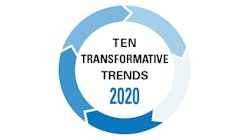Chief Equity Officers Become Critical Members of the C-Suite
In U.S. cities such as Baltimore and Philadelphia, world-class medical centers sit a few blocks away from neighborhoods with very poor health outcomes. In Philadelphia, neighborhoods that are only a few miles apart have life expectancy differences of 20 years.
Well aware of these disparities, many health systems have started creating offices and C-level executive positions focused of health equity. Chief equity officers have joined the C-suites at health systems such as Partners Healthcare, Nationwide Children’s Hospital and Massachusetts General Hospital. The American Medical Association also hired Aletha Maybank, M.D., as its first chief health equity officer. Maybank joined the AMA in 2019 after serving as deputy commissioner and founding director of the Center for Heath Equity within New York City’s public health department.
When the COVID-19 pandemic hit and the impact was much greater on African-American, Latino and Native American communities, it only re-emphasized how deep the disparities are. (According to preliminary data from the Johns Hopkins University and American Community Survey, the infection rate is three times higher in predominantly black counties than predominantly white counties, and the death rate is six times higher.)
So how are some health systems approaching health equity — both in terms of their interactions with patient communities and diversifying their work force?
System-level change
Jaya Aysola, M.D., is chair of Penn Medicine’s Health Equity Alliance and executive director for the Penn Medicine Center for Health Advancement within the Office of the Chief Medical Officer, where she leads the charge to improve equity and inclusion within the health system and affiliated health science schools.
Initially she was asked to help resident physicians and physicians in training receive some training around equity and inclusion. “It quickly became clear to me upon taking the job that this was going to have to be a health system endeavor as well,” she explains. “If we were going to focus only on educating the physicians in training and residents on principles of equity, it wouldn’t work if we did it in a vacuum and didn’t change the system of how we are delivering care. We had to do provider education and system-level change.”
Aysola says she began by standing up a Penn Medicine Health Equity Task Force and creating a blueprint for Penn Medicine to achieve health equity and inclusion. She and others founded the Center for Health Equity Advancement, which sits in the Office of the CMO at Penn Medicine. “Rather than naming a chief equity officer, we felt that this needed to be a centralized team that has a seat at the table for all CMO and CNO discussions,” she says. “The vision is that equity is not a siloed activity, but rather an integral and necessary part of daily operations — whether it is how we deliver care on the front lines or how we recruit and retain our work force. Those two things are intertwined.”
At the provider level, you can have unconscious bias and stereotypes, Aysola notes. “As clinicians, we have been trained in the same way with a knowledge base developed with a single cultural perspective. So oftentimes, we talk about diversifying the front lines, with the front-line workers in mind, but we also have to diversity those who are generating the science of tomorrow and have a seat at the table in the C-suite designing the models of delivering care. That will shift us toward a more equitable state.”
Aysola’s team is doing research on health equity efforts as well. “We think of our health system as the research laboratory but also as a key place to operationalize these truths with real-time data and discussions with CMOs,” she says. “For instance, like some other health systems we found a wait time disparity in patients admitted to a hospital through the emergency department. We took the extra step with signals we got in our health system to work with CMOs to do a deeper dive on why that is happening.”
Implicit bias training
In 2018, Olivia Thomas, M.D., took the position of chief diversity and health equity officer at Nationwide Children’s Hospital in Columbus, Ohio, after a career of work trying to increase access to primary care in underserved areas.
Among the initiatives she has started rolling out is implicit bias training for all 14,000 hospital employees. “We started with educating each new employee, but we are going to make sure all employees get some implicit bias training,” Thomas says. “We also focus on helping them understand poverty.” For the last three years, Nationwide Children’s has had clinicians and staff attend poverty simulation sessions. “We have large groups of providers and staff come into an auditorium for 90-minute sessions and we give them a feel for what it is like to live in poverty in a very interactive session. They are assigned to a simulated family —a single mom with two kids, for instance, and they get to understand how you sometimes have to make decisions about paying rent or feeding the family and how families have to interact with social service agencies.”
Another goal is increasing diversity among the work force. “We would like our work force to mirror our patient population, so we are focusing on recruiting a talented, diverse, innovative work force,” Thomas says. With nearly 2,000 supervisors and 14,000 employees, that is a huge undertaking. To make employees feel more included in the organization, her team formed eight employee resource groups for people from similar backgrounds and interests to be able to get together and support each other.
For years clinical researchers have recognized that research studies often fail to recruit and meaningfully engage with underserved communities. Nationwide Children’s is heavily involved in pediatric clinical research, and Thomas says researchers there understand the importance of equity.
Rhode Island’s health equity zones
The State of Rhode Island has been working for years to address inequities that show up in public health metrics. The state is trying to focus on many of the structural deficiencies in the ways that public health and healthcare providers interact with the community by creating health equity zones (HEZ). “It has been a journey 15 years in the making, and started with trying to figure out how we move further upstream and hit those root drivers contributing to poor outcomes,” explains Christopher Ausura, chief of special projects for the Health Equity Institute at the Rhode Island Department of Health. “It has been a frustration in public health and in the healthcare delivery system to keep seeing the same patients, and putting so much time and effort into trying to improve outcomes and we are not seeing them improve.”
The state’s public health department has worked to shift its investment portfolio to help communities make changes at the structural level. HEZ is the culmination of lessons learned in trying to address social and economic drivers of health. “We found that it is impossible to fix food access without addressing issues around economic disparities and income and transportation,” Ausura says. HEZ gives communities money not just to address one specific need but to rally around geographies. It builds a collaborative out of organizations that have a vested interest in improving conditions in that community. “We give them resources to build the collaborative out, conduct a formal needs assessment in the community and develop an action plan,” he says. There are currently 10 health equity zones up and running now, with a goal of increasing that number to around 40.
More work to do
Besides the health systems doing pioneering work on health equity, are there others that are just paying lip service to it or don’t know where to start? Ausura says that some health systems are treating it more as a community relations function rather than as a line of business. Penn’s Aysola believes there is a critical shift in interest in equity taking place, partly due to outside pressure from national health agencies and funders calling upon hospitals to look at their data and quality metrics through an equity lens. “They also are asking hospitals to think about equity and diversity as they train the next generation of physicians.”



